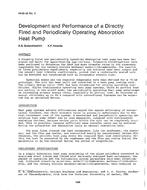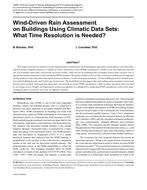Dynamic simulation of the heating load of a top floor of offices constructed of heavy masonry walls is presented. The system was assumed to operate for ten hours daily. Calculation was performed for a repeated daily temperature distribution representing a very cold day in the coastal region in Israel. Results were also compared to those obtained by representative monthly data. Results indicate that after two days of operation the system reaches a periodic condition. The load of the day following the weekend was about 30 percent higher than the periodic load. On a typical day, 75 percent of the total heat losses were found to be due to energy storage in the structural elements and only 17 percent due to conduction. Of all energy stored, 28 percent was due to the partitioning walls. Application of minimal layers of thermal insulation was found to reduce the heating load by 33-39 percent.
Dynamic occupancy distributions were measured for the installation. These distributions indicate possible reductions in total heating load to about 88 percent, 77 percent, and 62 percent of the calculated values by use of the upper decile, upper quartile, and mean distributions, respectively. Use of these distributions may further reduce the installed heating capacity required during peak demand hours.
Citation: ASHRAE Transactions, 1984, vol. 90, pt. 1A, Atlanta, GA
Product Details
- Published:
- 1984
- Number of Pages:
- 16
- File Size:
- 1 file , 1.3 MB
- Product Code(s):
- D-AT-2817


